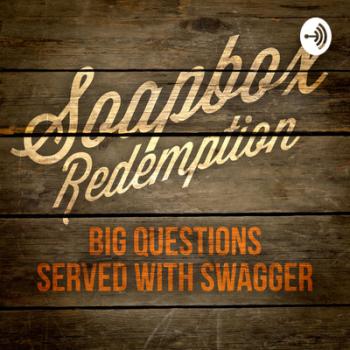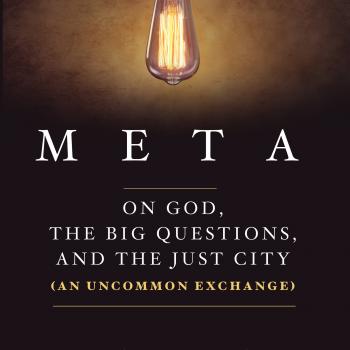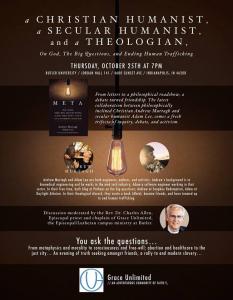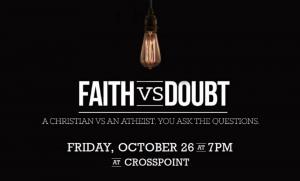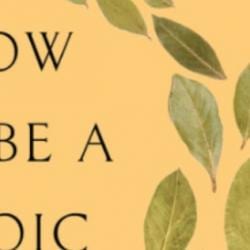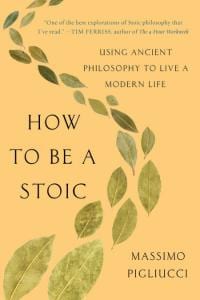 For those interested in an overview of the history and practice of Stoicism, author Massimo Pigliucci soars as a tour guide par excellence, as does his unique background as a scientist, philosopher, practicing Stoic, author, and communicator.
For those interested in an overview of the history and practice of Stoicism, author Massimo Pigliucci soars as a tour guide par excellence, as does his unique background as a scientist, philosopher, practicing Stoic, author, and communicator.
Focus on what you can control; anything else is a harmful double edge sword, it wastes time and energy on what you cannot influence and it distracts from what you can. Stated more eloquently by the author (bold my emphasis):
“Stoicism is not about suppressing or hiding emotion – rather it is about acknowledging our emotions, reflecting on what causes them, and redirecting them for our own good. It is also about keeping in mind what is and what is not under our control, focusing our efforts on the former and not wasting time on the latter. It is about practicing virtue and excellence and navigating the world to the best of our abilities, while being mindful of the moral dimension of our actions.” (page 2)
It sounds easy, but try it for 24 hours, or even one hour – and specifically during a dark and challenging hour/day/month/year. At the time of this review, we are in the midst of the unprecedented Coronavirus outbreak. I can say this with certainty: my now Stoic practicing mindset is reacting much differently than I would have preciously. If Victor Frankl (and many others) can survive the Holocaust by focusing on what they can control, I can stay calm and focus on what I can control during this pandemic (or a worse outbreak, war, or even in small day to day challenges in dealing with friends, families, coworkers, etc.).
For my readers, you know I’ve been tremendously inspired by the idea of Aristotelian ethics and virtue theory. Add Frankl’s Man’s Search for Meaning and logotherapy (which was inspired by Stoic principles as Massimo points out), and my discovery and practice of meditation, I was already a Stoic – I just didn’t know it yet.
To be clear, the author points out that “Stoicism is a philosophy, not a type of therapy” (page 9). The practice of the philosophy can be therapeutic, but Stoicism is itself is not a therapy (like logotherapy); rather the underlying Stoic philosophical principles are part of the foundation (of logotherapy, for example). The beauty of the philosophy is how simple, yet demanding it is. It ultimately amounts to moral character being “the only truly worthy thing to cultivate” and “your ability to live a moral life and thus achieve what Stoics call ataraxia, or tranquility of mind” (page 10). It is adopting this life philosophy, and focusing on what you can control, that dramatically changes one’s outlook and behavior.
Stoicism is also not a theology. The author (an atheist) points out that Stoics “believed that the universe is structured according to what they called the Logos, which can be interpreted as either God or simply what is sometimes termed ‘Einstein’s god’: the simple, indubitable fact that Nature is understandable by reason” (page 6), which appeals to him as a nonreligious person – it serves as an “ecumenical philosophy, one that can share goals and at least some general attitudes with other major ethical traditions across the world” (page 10). This is incredibly appealing to me (progressive Christian, to say the least) for the same reasons. As I penned in my book Meta (co-authored by Adam Lee), “we can stand together as friends and change the world—uniting to fight against injustices like poverty and human trafficking. We’ll debate on the metaphysics on the car ride over”. Stoic principles allow this common ground of practical ethics, moral character, and striving to reach one’s potential by living in accordance to the Logos, however one defines it; for the early Stoics God was “a material God immanent in the cosmos” (page 22).
The author does a very nice job laying out Stoicism’s basic principles, then moving into the history of Stoicism from early Stoa and founder Zeno, to late Stoa and emperor Marcus Aurelius – and how many philosophers and theologians like Augustine, Aquinas, Bacon, and Descartes were deeply influenced by Stoicism – as were relatively recent psychologists in Viktor Frankl (and his logotherapy) and Albert Ellis (and his rational emotive behavior therapy).
It was truly surprising to me to learn both the influence of Stoicism and the power of Stoic principles in doing what virtue requires and focusing on what you can control. Another key example pointed out by the author is the Serenity Prayer which has inspired countless people, and of course serves as a bedrock of 12 step programs (bold emphasis mine):
God, grant me the serenity to accept the things I cannot change,
Courage to change the things I can
And the wisdom to know the difference
It’s easy to see the Stoic influence when you look at Epictetus’ (a prominent Stoic figure) early rendition of similar sentiments:
“Make the best use of what is in your power, and take the rest as it happens. Some things are up to us and some things are not up to us. Our opinions are up to us, and our our impulses, desires, aversions-in short, whatever is our own doing. Our bodies are not up to us, nor are our possessions, our reputations, or our public offices, or, that its, whatever is not our own doing.”
The author nails a key point that some key tenants of Stoicism are shared in other prevalent philosophical and theological traditions (including Judaism, Christianity, Buddhism, and Taoism), “some of these parallels are the result of direct or indirect reciprocal influence, and others represent the independent convergence of wise minds reflecting on the human condition” (page 31). In short, for most of us, these key principles shouldn’t be shocking (as these tenants are common to many virtue ideologies, and with that, if we think about when we’ve practiced these tenants, we’re typically our best selves), hence my previous feeling that I was always a Stoic, I just didn’t know it.
Think about it. When you’re worrying about what you cannot control, what is your typical mental state? What behavior typically follows? At the other end, when you focus on what you can control and do what virtue demands, what is your typical mental state and behavior? This is the essence of the “dichotomy of control”.
The fourth chapter on “Living According to Nature” nicely illustrates the difference between Stoicism and other prominent ethical systems. The attraction is that it extends far beyond the classical ideas of “good” in deontological and consequentialist forms of ethics. To be clear, it doesn’t deny moral truths in these ethical systems, it’s just that a virtue-based ethic like Stoicism requires more than just these ethical systems alone. The Stoic ethic, aims for eudaimonia, the ethically good life where one’s actions require what virtue demands as a social and rational animal living in communion with humankind (along with all living creatures and our planet, for that matter).
So let’s say you’re ready to jump in with both feet. What about that small (or large) circle of people that are impossible to be around, treat us terribly, or are just sometimes very difficult? What a perfect challenge to do what virtue demands and focus on what we can control and positively influence. Besides, it’s only due to their lack of wisdom, so losing your patience is not only exacerbating the situation, it’s falling short of your own potential and your commitment to yourself and others. If you raised children, you will definitely know what I am getting at (both in success and failure).
Along these lines, anger is a big one for the Stoics; and unsurprisingly – it is one of the easiest distractions to focusing on what you can control and doing what virtue demands. Contra the common misunderstanding that “being Stoic” means being emotionless, Stoics fully expect anger to present (and other emotions like anxiety, worry, etc) its ugly head. To Epictetus’ sentiments above, it’s how we handle that anger (and anxiety, worry, etc.) that matters. To the example above, in raising a child, we can only do so much to control his/her behavior; when they genuinely surprise us with their lack of virtue, how do we respond with the anger that presents?
The twelfth chapter on “How to Deal with Anger, Anxiety, and Loneliness” is an outstanding application to the ideas presented prior throughout the text. We will most certainly have certain situations and/or raw emotions present themselves in life, but there is always a good, better, and best (or bad, real bad, and worst) way to respond. Take, for example, a season of solitude:
“We may have little or no control over the external circumstances that force us into being alone at some time in our lives. But (save for pathological conditions, for which one needs to seek medical help), it is our choice, our own attitude, that turns solitude, into loneliness. We may be alone, but we do not consequently need to feel helpless” (page 185)
In the final chapter, the author lays out twelve main “spiritual exercises” that he drew from Epictetus’ Enchiridion; daily exercises that reinforce Stoicism as a life philosophy. Things like “examine your impressions”, “pause and take a deep breath”, and “how can I use virtue here and now?”, combined with the Stoic requirement of “reflect on your day” – a life philosophy now takes on specific daily practices that reinforce it.
How to be a Stoic: Using Ancient Philosophy to Live a Modern Life is an outstanding and accessible must-read for anyone with an interest in philosophy, ethics, and psychology (whether or not you are a Stoic). Whether or not you are converted, you’ll be inspired. And if you are inspired, perhaps, like me, you’re already converted, you just didn’t know it yet.


